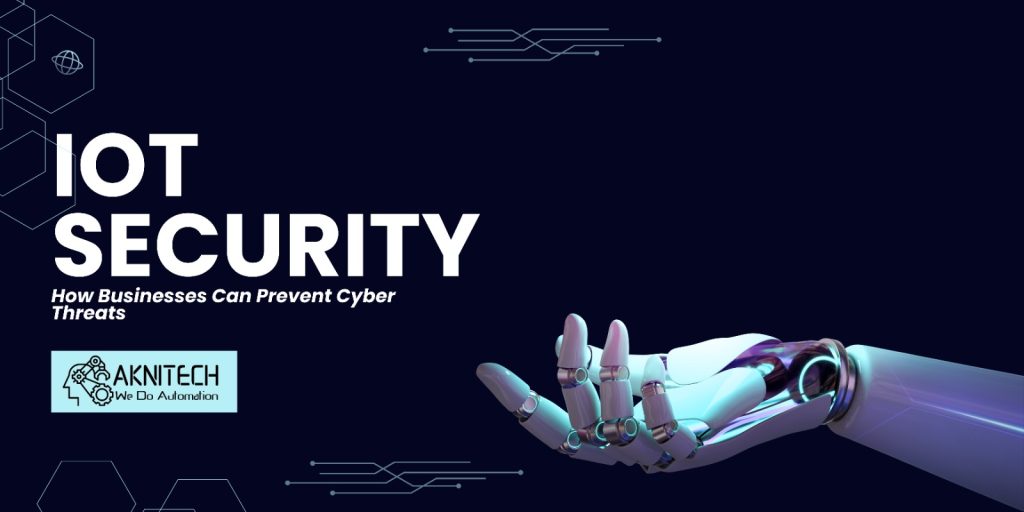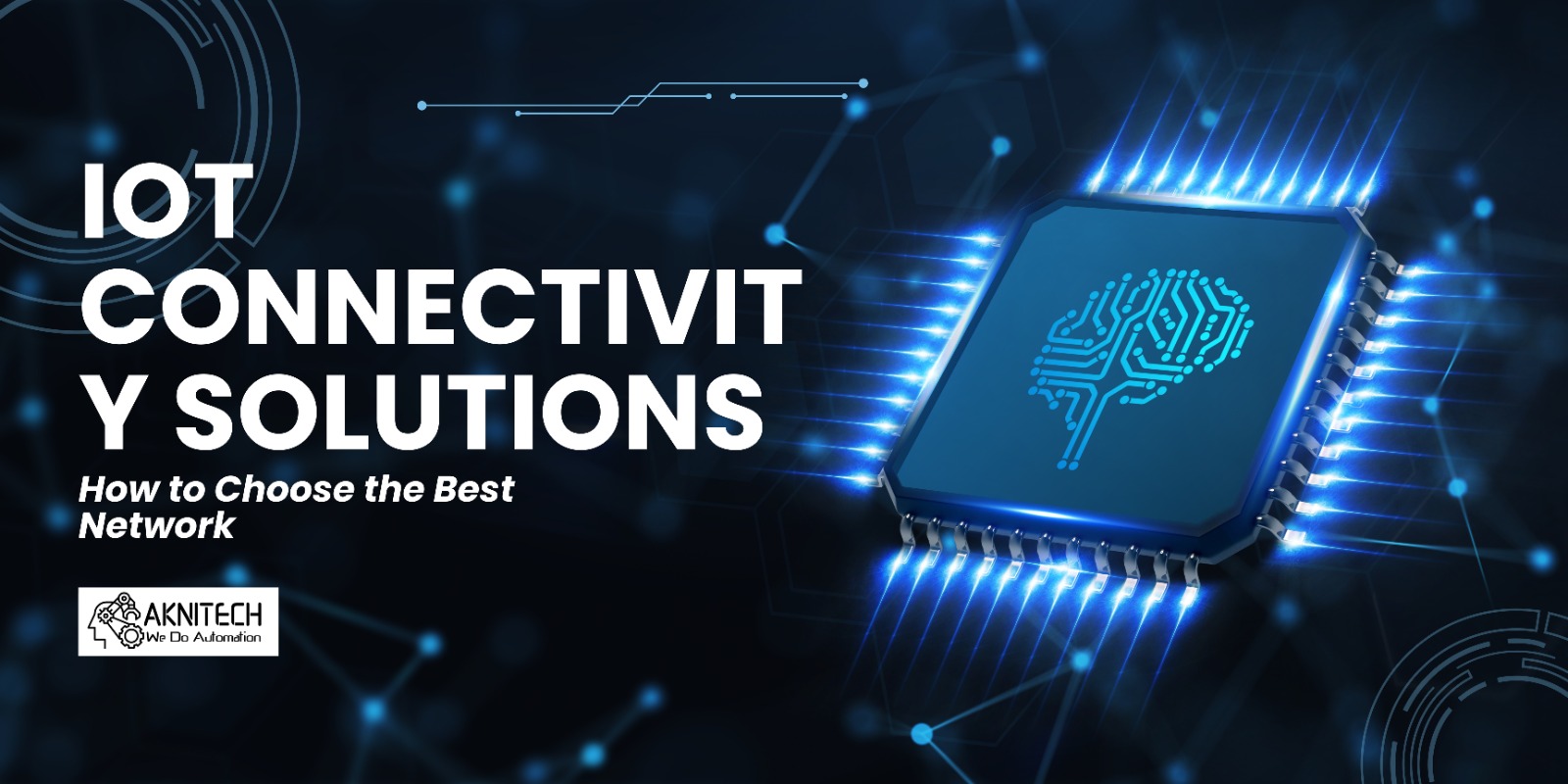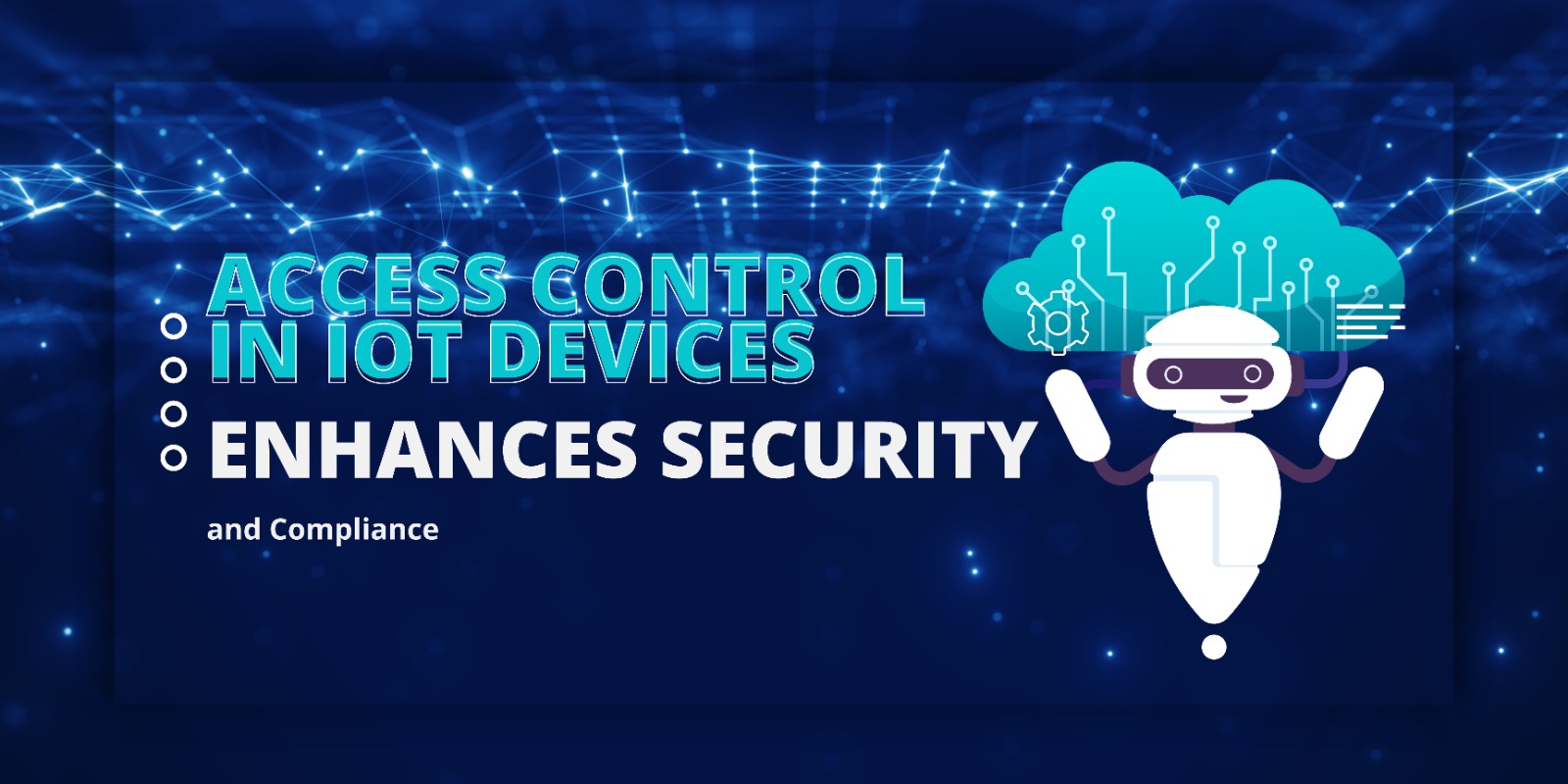With the rapid adoption of connected devices across industries, businesses are increasingly dependent on IoT Security for automation, efficiency, and data-driven decision-making. However, the rise of interconnected networks has also led to increased vulnerabilities, making cybersecurity a critical concern. Without proper security measures, IoT devices can become easy targets for cybercriminals, leading to data breaches, operational disruptions, and financial losses.
Aknitech Automation provides advanced security solutions that protect businesses from IoT-based cyber threats by integrating encryption, access control, network monitoring, and real-time threat detection. This blog explores key risks associated with connected devices, best practices for security implementation, and how businesses can ensure a safer IoT environment.
Understanding the Risks in IoT Security
Businesses rely on IoT for automation, remote monitoring, and smart decision-making. However, unsecured IoT ecosystems create vulnerabilities that can lead to:

- Unauthorized Access – Hackers can exploit weak authentication systems to gain control over devices and manipulate operations.
- Data Breaches – Sensitive business and customer data can be intercepted, stolen, or altered.
- Malware Attacks – Unsecured IoT devices can be infected with malicious software that disrupts operations.
- Denial-of-Service (DoS) Attacks – Attackers can overload devices with excessive traffic, causing downtime.
- Insider Threats – Employees or third-party service providers with access to IoT systems may unintentionally or maliciously compromise security.
Implementing a strong security framework is essential for protecting business operations from evolving cyber threats.
Best Practices for Strengthening IoT Security
1. Implement Strong Authentication and Access Control
One of the most effective ways to secure IoT systems is by ensuring that only authorized personnel and applications can access connected devices. Businesses should:
- Use multi-factor authentication (MFA) to add an extra layer of security.
- Apply role-based access control (RBAC) to limit device access based on user roles.
- Encrypt login credentials and ensure passwords follow complex security standards.
2. Encrypt Data Transmission
IoT devices continuously send and receive data, making encryption essential to prevent unauthorized interception. Businesses should:
- Use end-to-end encryption (E2EE) to secure communication between devices.
- Implement secure communication protocols such as MQTT with TLS/SSL encryption.
- Store sensitive data in encrypted databases to prevent data leaks.
3. Regular Firmware and Software Updates
Many IoT cyber threats exploit outdated firmware and software vulnerabilities. Keeping devices updated ensures they have the latest security patches. Best practices include:
- Automatic updates for firmware to address vulnerabilities in real-time.
- Regular security audits to identify and fix weak spots in IoT networks.
- Applying firewalls and intrusion detection systems (IDS) to prevent unauthorized access.
4. Secure IoT Networks and Use Segmentation
A compromised IoT device can spread threats across the entire network. Businesses can enhance security by:
- Segmenting IoT networks from core IT infrastructure to prevent breaches from spreading.
- Using Virtual Private Networks (VPNs) for secure remote access.
- Implementing Zero Trust Architecture (ZTA), where every access request is verified before granting access.
5. Monitor IoT Traffic with AI-Powered Threat Detection
AI-powered security solutions can analyze IoT network traffic to detect anomalies and potential cyber threats. Businesses should:
- Deploy behavioral analytics to detect unusual device activity.
- Use automated response mechanisms to isolate compromised devices.
- Implement real-time monitoring dashboards for continuous security assessment.
6. Strengthen Endpoint Security
Since IoT devices often operate at the network’s edge, securing these endpoints is crucial. Businesses should:
- Install endpoint detection and response (EDR) solutions.
- Ensure firmware hardening to prevent device tampering.
- Use tamper-proof authentication mechanisms for critical devices.
7. Conduct Regular Security Audits and Employee Training
Cybersecurity is a shared responsibility, and employees play a critical role in protecting IoT systems. Businesses should:
- Conduct regular security audits to test vulnerabilities in IoT devices.
- Train employees on IoT security best practices, such as recognizing phishing attacks and using secure passwords.
- Establish incident response plans to mitigate security breaches effectively.
How Aknitech Automation Protects Businesses from IoT Cyber Threats
Aknitech Automation provides end-to-end IoT security solutions that help businesses protect their connected systems. The company offers:
- Custom security frameworks for businesses deploying IoT solutions.
- AI-powered network monitoring for real-time cyber threat detection.
- Secure data encryption and access control solutions for industrial IoT networks.
- Automated firmware updates and patch management to reduce vulnerabilities.
- Integration of Zero Trust Security Models to minimize attack risks.
By adopting these security solutions, businesses can ensure their IoT infrastructure remains secure, reliable, and resilient against cyber threats.
Industries That Require Strong IoT Security Measures
1. Smart Manufacturing and Industrial Automation
Manufacturing plants use IoT to control automated production lines, monitor equipment, and improve efficiency. Securing IoT in these environments ensures continuous operations and prevents cyber disruptions.
2. Healthcare and Medical IoT
Hospitals use IoT-enabled medical devices for patient monitoring, diagnostics, and automated treatment. Implementing strict security controls ensures patient data protection and compliance with healthcare regulations.
3. Smart Cities and Infrastructure
IoT is used in traffic control systems, smart grids, and public security networks. Protecting these systems ensures public safety and uninterrupted city operations.
4. Finance and Banking
Connected banking systems, ATMs, and online financial services rely on IoT security to prevent data theft, fraud, and cyberattacks.
5. Retail and Supply Chain Management
IoT enables inventory tracking, warehouse automation, and smart logistics. Implementing strong cybersecurity practices prevents unauthorized access to supply chain data.
Conclusion
IoT security is a crucial factor in ensuring the safety, reliability, and efficiency of connected systems. Without robust security measures, businesses risk cyberattacks that can disrupt operations and compromise sensitive data. Implementing access control, encryption, network monitoring, and predictive threat detection helps mitigate these risks.
Aknitech Automation offers advanced IoT security solutions to safeguard businesses from cyber threats. As industries continue to adopt IoT, investing in cybersecurity will be essential for protecting digital assets, ensuring compliance, and maintaining business continuity.







